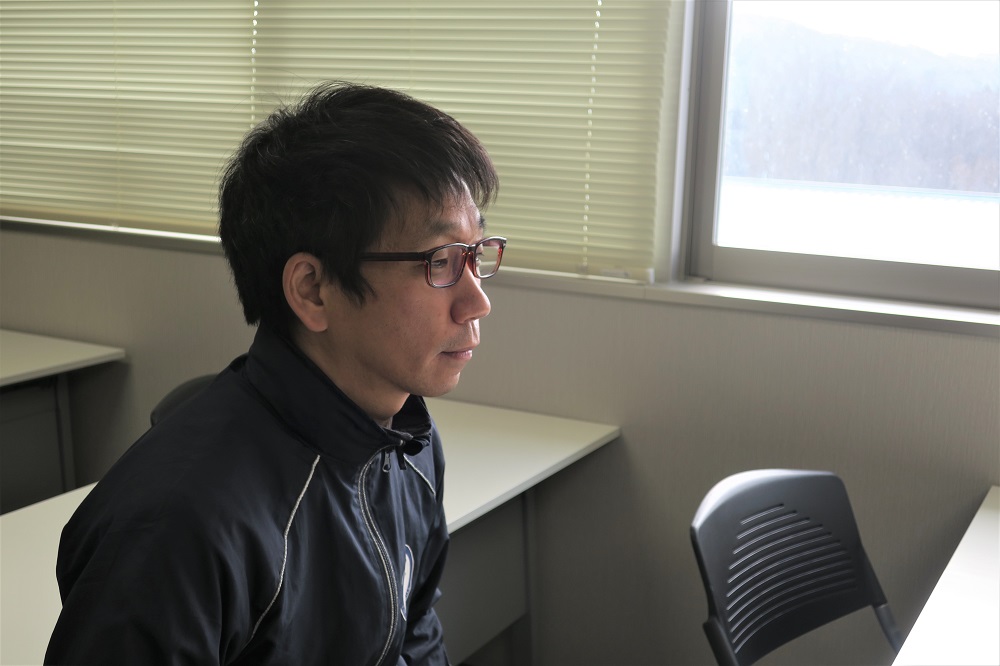Keep the lessons of the nuclear accidents and pass them on to future generations.
Yoshifumi Wakiyama (Associate Professor)
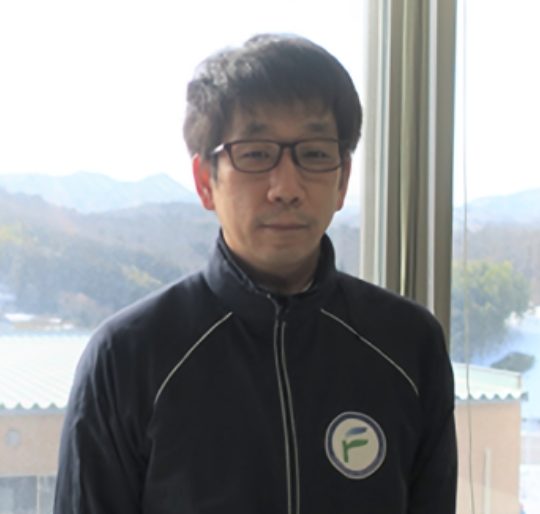
What made you interested in the research field of hydrogemorphology?
I took the term “hydrogeomorphology” from a book written by my supervisor of the doctoral course. Briefly, it is an academic field studying interaction between hydrological cycle and geomorphological processes. As I continued my research on the dynamics of sediments and behavior of radionuclides which are related to the transportation of water and sediments, I learned that it was important to consider the properties of soil and sediments, movement and power of water, process of terrestrial changes, and interaction of all these factors. In order to express my research interests which cover these factors, I call my research field “hydrogeomorphology”.
As an undergraduate student, I was interested in desertification. Learning that the soil erosion is one of the factors that lead to desertification, I decided to major in soil science and studied soil erosion in cypress plantations. Then, I entered the graduate school and chose the theme of my master’s thesis as estimation of soil erosion using fallout radionuclides such as 137Cs of global fallout and natural 210Pbex. In the doctoral study, I continued to use the method. At that time, most of researches had directly measured the amount of eroded sediment and runoff water to quantify sediment yields with observation apparatus installed in the fields. On the other hand, indirect method employing fallout radionuclides were rare. I thought it would produce interesting results and decided to take the method.
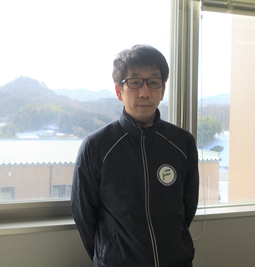
What kind of institute did you belong to before the IER? What kind of research activity did you conduct there?
From 2010, I started working as a researcher at Terrestrial Environment Research Center at University of Tsukuba and was involved in a research project targeting the mountainous area in Chubu Region. In the project, I conducted measurements of stable isotopes in rain and river water as well as observation of snowmelt runoff. Through these research activities, I obtained knowledge in hydrology and meteorology. Then, in October 2013, I joined Center for Research in Isotopes and Environmental Dynamics (CRiED) at University of Tsukuba. Since the CRiED owned a variety of measurement equipment including Ge detectors, researchers started the measurement of radioactive substances immediately after the nuclear accident in Fukushima. In the CRiED, I studied the transportation of radionuclides in Fukushima caused by soil erosion and river water flow, which led me to my current research.
What brought you to Fukushima and the IER?
The IER was established in July 2013. Since then, I have frequently visited Fukushima on field trips as a member of University of Tsukuba. I have visited the IER and worked using its facilities, invited Dr. Golosov, a former researcher of the IER (from March 2014 to April 2016), Dr. Konoplev, and Dr. Zheleznyak to University of Tsukuba, and visited field sites together with the researchers. From these experiences, I remember the early days of the IER. As my research progressed, I was encouraged by my boss to apply for an opening position at the IER. I officially joined the IER as a senior assistant professor in 2015 and have been working here ever since then.
Living in Fukushima, I feel that the prefecture is blessed with many tourism resources. There are a lot of enjoyable, attractive nature spots within a two-hour driving distance from the center of Fukushima City, such as hot springs, volcanos, lakes, ski resorts, etc.
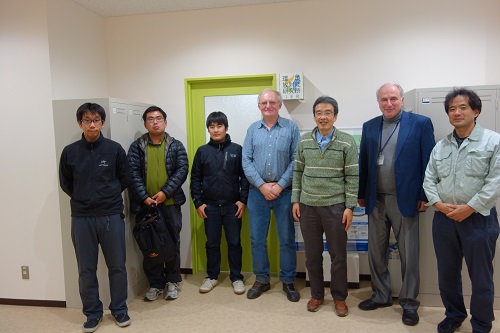
What kind of research have you conducted at the IER? What are the research findings so far?
In a research project that has been conducted in cooperation with Dr. Konoplev and other IER researchers at some reservoirs in the difficult-to-return-zone, we found that the 137Cs concentration in suspended materials in water decreased over a long period of time.
Also, I compiled the results of observation that were collected by using soil erosion plots, which I have continued since I was at University of Tsukuba. The results presented a quantitative relation between rainfall and transportations of sediment/137Cs. During the observation, I went through some difficult situations where the installed observation equipment was washed away due to the heavy rain, etc.
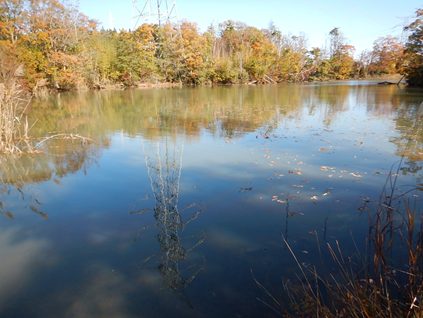
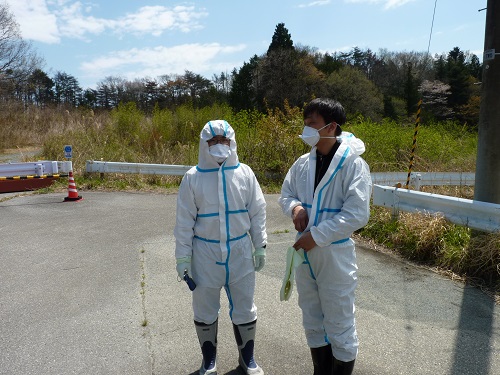
Currently, I have been focusing on the dynamics of 137Cs in rivers. We have learned a lot about 137Cs behavior in rivers under low flow conditions from the past research results obtained in various different locations. For example, it has been reported that the concentration of dissolved 137Cs correlates with that of competitive ions, and the 137Cs concentration of suspended materials differs depending on the particle size distribution of the materials. However, as I analyze the river water collected during flood events, I found that such relation does not always exist. At the moment, other factors that cause 137Cs concentration to fluctuate are not fully understood. I will accumulate data from various different rivers and elucidate the factors that contribute to the changes in 137Cs concentration.
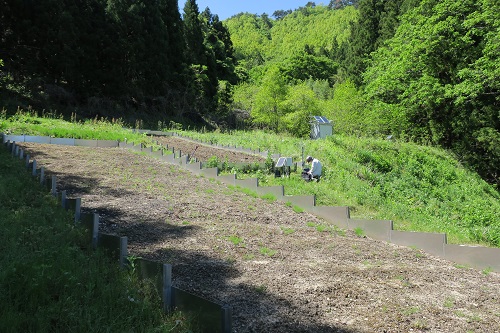
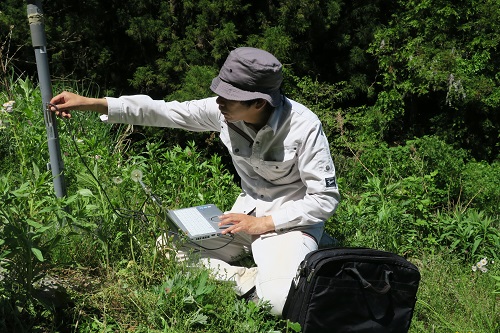
In 2019, a master’s program of the environmental radioactivity science major was established, and I began to supervise students. One of my students is conducting research on rivers in flood. He is observing the time variation of 137Cs concentration in river water, from the time when the water starts to increase until it gets back to normal again. Observation of flooding rivers is not easy, but we feel it is worth trying when we get results. I think it is an attractive research topic to continue to work on.
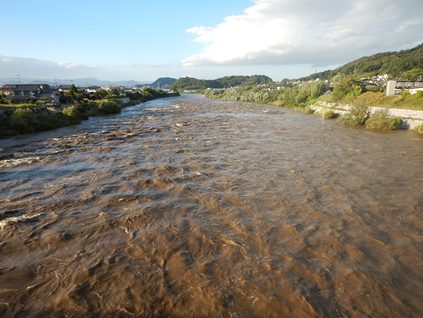
What kind of research do you want to try in the future?
I would like to continue to study the behavior of radionuclides in terrestrial areas in Fukushima. Since my main research activity is fieldwork, it is necessary for me to fit in the local community. As I mentioned earlier, there are limited data on the behavior of radionuclides in rivers in high flow conditions. I would like to collect more data with ensuring safety. Also, I am thinking of collaborating with researchers studying the ocean and conducting research on the effects of sediments and radionuclides transported from rivers to the ocean.
It is not easy to set a final goal of research as ideas of new challenges are flowing and research never stops. I am always trying to make myself think about next challenges to tackle like “It would be interesting if I could get the data of xxx.” or “What happens if I compare this under these two different conditions?” I would like to continue to set such small targets and try to achieve them one by one.
Could you give a message to whom interested in studying environmental radioactivity?
I believe that interdisciplinary approach is necessary to understand the behavior of radionuclides in the environment. Generally, research institutes often consist of researchers whose research interests are close or similar. On the other hand, researchers from diverse field of specialization are cooperating and working together at the IER. For example, we have a researcher studying genes and I am focusing on soil which are very different. This interdisciplinarity is what makes the IER special. I believe that the IER is where anyone from any research field can work together, if he/she wishes to tackle issues related to environmental radioactivity.
I consider that a piece of the significance of studying environmental radioactivity is to keep the lessons of the nuclear accidents and pass them on to future generations. The Chernobyl nuclear accident is an example of past major nuclear disaster. The IER has researchers who have research experience immediately after the accident. They have rich experience and wide range of knowledge. Working together with them, I feel that it is important to continue to pass on such knowledge and experience that they have. It is an essential mission for those who study environmental radioactivity to utilize what they learned from the past accidents and prepare for possible nuclear accidents in future which, of course, should never happen.
